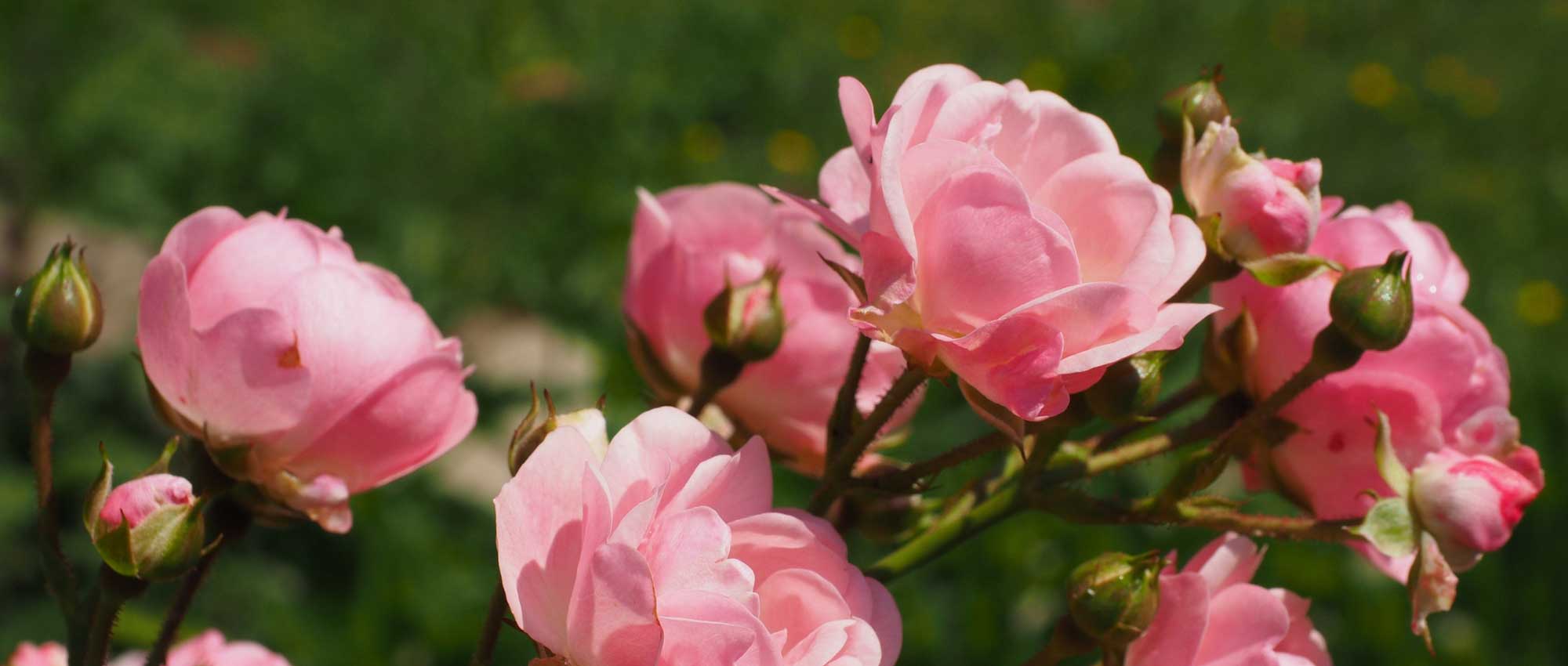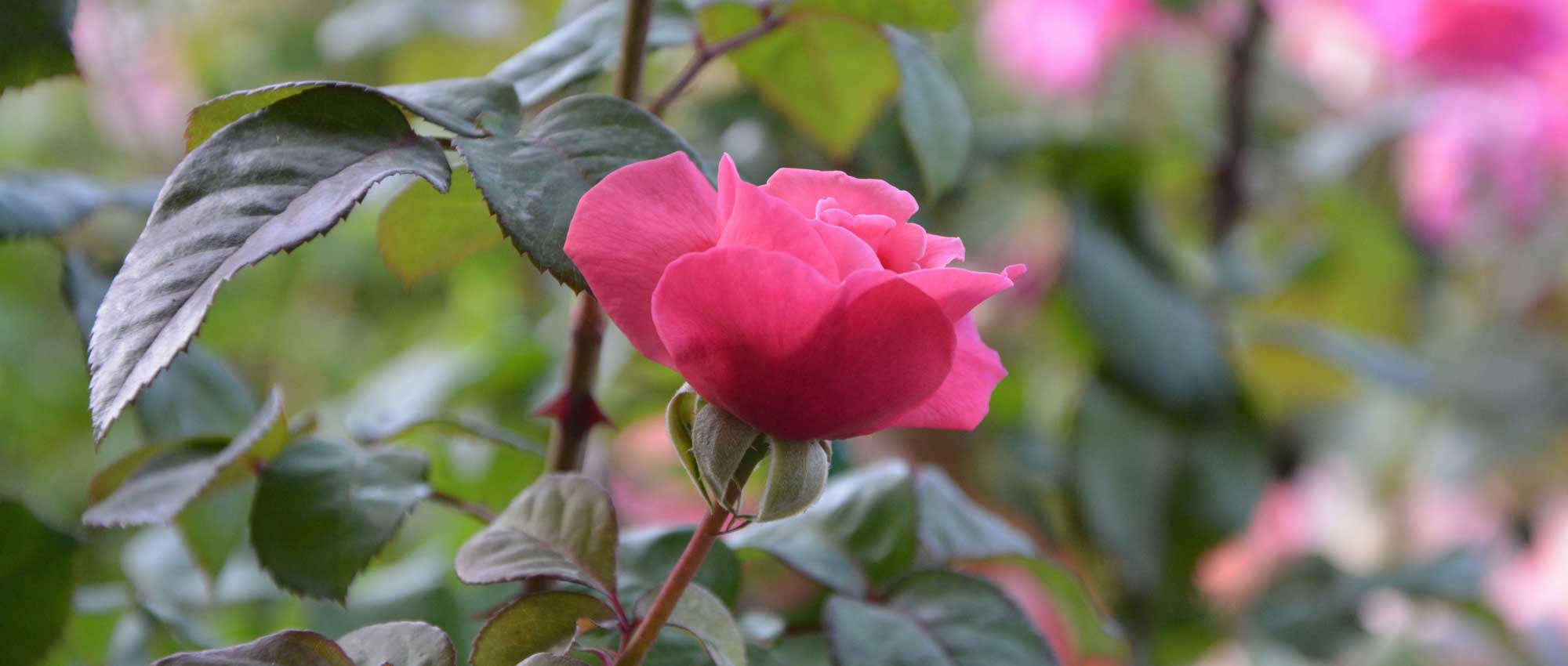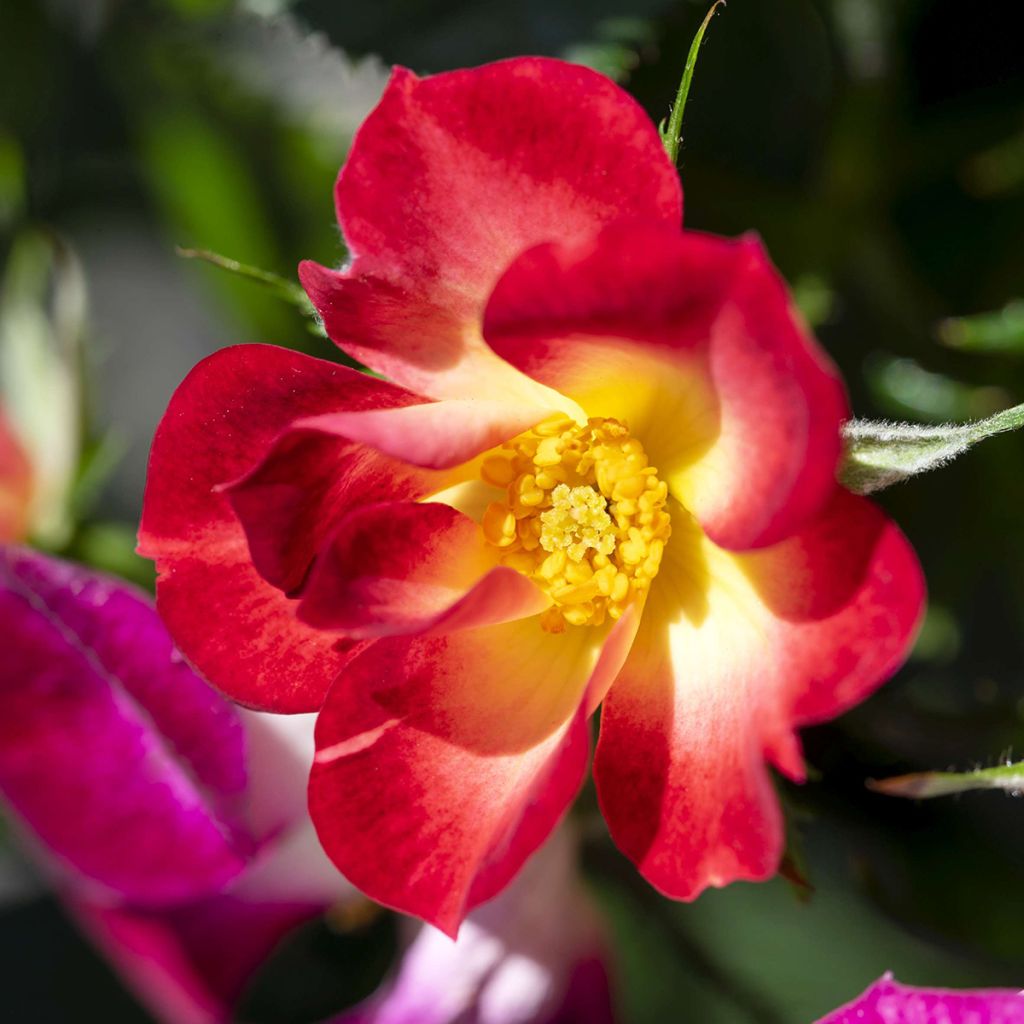

Rosa Rosy Boom - 'Colour Change' - Shrub Rose
Rosa Rosy Boom - 'Colour Change' - Shrub Rose
Rosa Rosy Boom ® Colour Change
Polyantha Rose
The rose bush received as a replacement under warranty appears healthy to me. Planted near a 'Tom Pouce' camellia, I am now waiting for it to take off... or not?
Thierry, 19/10/2024
Special offer!
Receive a €20 voucher for any order over €90 (excluding delivery costs, credit notes, and plastic-free options)!
1- Add your favorite plants to your cart.
2- Once you have reached €90, confirm your order (you can even choose the delivery date!).
3- As soon as your order is shipped, you will receive an email containing your voucher code, valid for 3 months (90 days).
Your voucher is unique and can only be used once, for any order with a minimum value of €20, excluding delivery costs.
Can be combined with other current offers, non-divisible and non-refundable.
Home or relay delivery (depending on size and destination)
Schedule delivery date,
and select date in basket
We guarantee the quality of our plants for a full growing cycle, and will replace at our expense any plant that fails to recover under normal climatic and planting conditions.
Description
The Rosy Boom 'Colour Change' shrub rose is a low-maintenance and easy-to-grow bush rose with astonishing flowering that changes colour throughout the season. Its small, fragrant cup-shaped flowers with white centres and yellow stamens bloom in red in June, and over 100 days, they transition to pink and then intense violet. Its sturdy flower panicles are not afraid of rain. This hardy, healthy, and compact selection is easily pruned. It forms an upright bush with a flexible habit, suitable for planting in flower beds, small hedges, and containers, with a natural yet modern appearance reminiscent of wild roses.
The Rosy Boom 'Colour Change' shrub rose has a very flexible and bushy habit, reaching an average height of 1.40m (5ft) and a width of 60cm (24in) at maturity, making it ideal for small spaces. Its flowering is particularly abundant and regular from June to September as long as the soil remains moist. Its small, 4cm (2in)-wide roses are gathered in generous panicles. They have slightly flattened cup shapes and come in three different colours: red, pink, and intense violet. They have white centres and yellow stamens. The stems are adorned with deciduous foliage that is very healthy, consisting of leaflets with a smooth, satin-like finish. The growth of the shrub is slow.
Landscape roses are perfect for creating beautiful small hedges, planting them mixed along the edge of a terrace or in beds with small-sized shrubs. Combine them with abelias, nandinas, deciduous ceanothuses (pink or blue varieties), or caryopteris. They make great companions for peonies, paniculate phlox, and tall baby's breath. The modest size of Rosy Boom Colour Change allows it to fit in any garden, even small ones. It has versatile uses, depending on the preferences of each gardener: in a rose bed, alongside pink, red, or purple varieties such as Rhapsody in Blue, or mixed with easy-to-grow plants like perennial geraniums such as Rozanne, small-flowered carnations, perennial salvias, or pink and blue asters.
Rosa Rosy Boom - 'Colour Change' - Shrub Rose in pictures
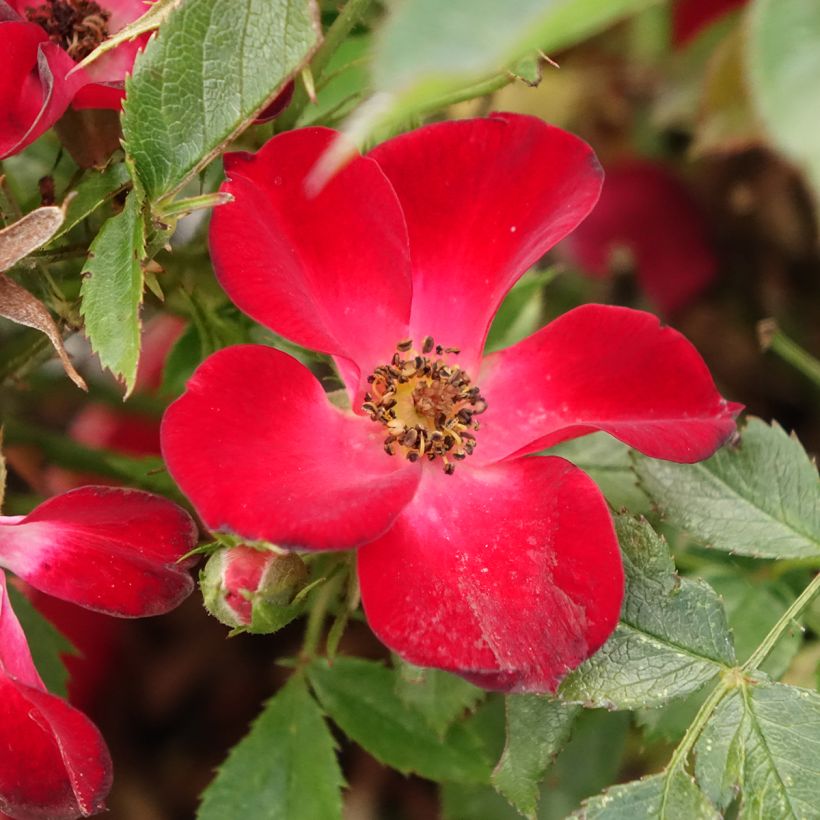

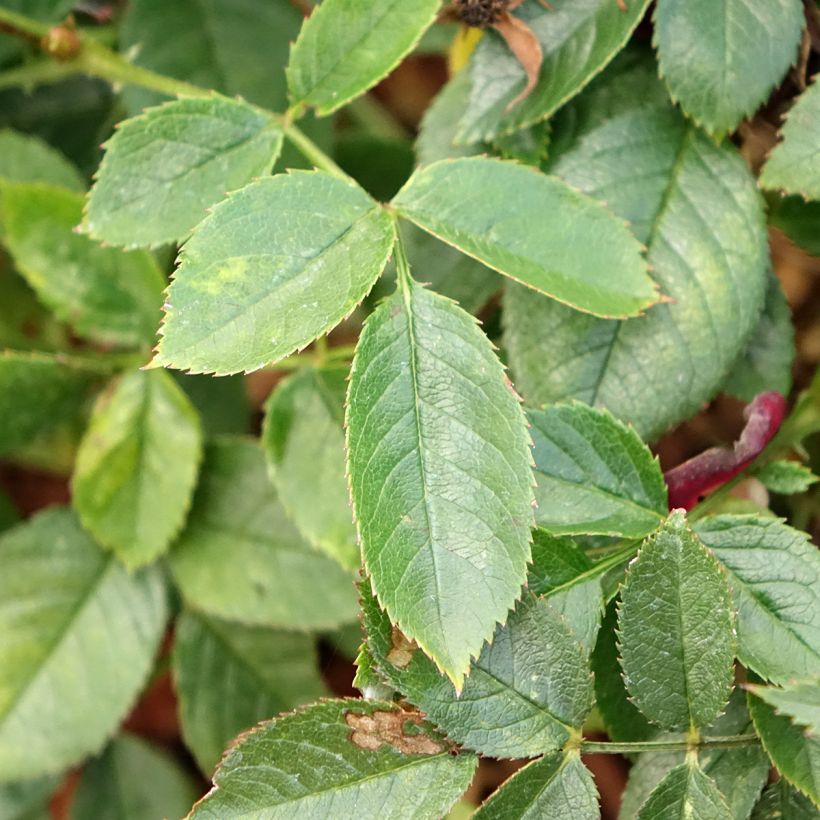

Plant habit
Flowering
Foliage
Botanical data
Rosa
Rosy Boom ® Colour Change
Rosaceae
Polyantha Rose
Cultivar or hybrid
Planting and care
The Rose Rosy Boom 'Colour Change' is a low-maintenance flower that thrives in most regions except very hot ones. It is easy to care for, as it is not susceptible to diseases, cold or rain. Plant it in well-drained soil that has been prepared well and in a location that gets plenty of sun or partial shade. This rose is very hardy and can survive temperatures as low as -20°C (-4°F).
For best results, make sure the location gets sun for 4 to 5 hours every day, but not during the hottest part of the day or in strong winds. The soil should be loose, permeable, and nutrient-rich, but roses can adapt to any garden as long as the soil is well-prepared and rich enough. If you want to plant your rose in a pot, work the soil to a depth of 25 cm (10in) by crumbling it and adding a bottom amendment such as blood, fish, and bone. Position your plant, remove it from its pot, and cover the top of the root ball with 3 cm (1in) of soil. Backfill and water generously to eliminate air pockets. In dry weather, water regularly for a few weeks to help the roots develop. Also, use special rose fertiliser to stimulate plant flowering.
Roses may develop unsightly spots at the end of summer, but this is a natural occurrence and doesn't harm the rose's growth.
Planting period
Intended location
Care
Planting & care advice
-
, onOrder confirmed
Reply from on Promesse de fleurs
Haven't found what you were looking for?
Hardiness is the lowest winter temperature a plant can endure without suffering serious damage or even dying. However, hardiness is affected by location (a sheltered area, such as a patio), protection (winter cover) and soil type (hardiness is improved by well-drained soil).

Photo Sharing Terms & Conditions
In order to encourage gardeners to interact and share their experiences, Promesse de fleurs offers various media enabling content to be uploaded onto its Site - in particular via the ‘Photo sharing’ module.
The User agrees to refrain from:
- Posting any content that is illegal, prejudicial, insulting, racist, inciteful to hatred, revisionist, contrary to public decency, that infringes on privacy or on the privacy rights of third parties, in particular the publicity rights of persons and goods, intellectual property rights, or the right to privacy.
- Submitting content on behalf of a third party;
- Impersonate the identity of a third party and/or publish any personal information about a third party;
In general, the User undertakes to refrain from any unethical behaviour.
All Content (in particular text, comments, files, images, photos, videos, creative works, etc.), which may be subject to property or intellectual property rights, image or other private rights, shall remain the property of the User, subject to the limited rights granted by the terms of the licence granted by Promesse de fleurs as stated below. Users are at liberty to publish or not to publish such Content on the Site, notably via the ‘Photo Sharing’ facility, and accept that this Content shall be made public and freely accessible, notably on the Internet.
Users further acknowledge, undertake to have ,and guarantee that they hold all necessary rights and permissions to publish such material on the Site, in particular with regard to the legislation in force pertaining to any privacy, property, intellectual property, image, or contractual rights, or rights of any other nature. By publishing such Content on the Site, Users acknowledge accepting full liability as publishers of the Content within the meaning of the law, and grant Promesse de fleurs, free of charge, an inclusive, worldwide licence for the said Content for the entire duration of its publication, including all reproduction, representation, up/downloading, displaying, performing, transmission, and storage rights.
Users also grant permission for their name to be linked to the Content and accept that this link may not always be made available.
By engaging in posting material, Users consent to their Content becoming automatically accessible on the Internet, in particular on other sites and/or blogs and/or web pages of the Promesse de fleurs site, including in particular social pages and the Promesse de fleurs catalogue.
Users may secure the removal of entrusted content free of charge by issuing a simple request via our contact form.
The flowering period indicated on our website applies to countries and regions located in USDA zone 8 (France, the United Kingdom, Ireland, the Netherlands, etc.)
It will vary according to where you live:
- In zones 9 to 10 (Italy, Spain, Greece, etc.), flowering will occur about 2 to 4 weeks earlier.
- In zones 6 to 7 (Germany, Poland, Slovenia, and lower mountainous regions), flowering will be delayed by 2 to 3 weeks.
- In zone 5 (Central Europe, Scandinavia), blooming will be delayed by 3 to 5 weeks.
In temperate climates, pruning of spring-flowering shrubs (forsythia, spireas, etc.) should be done just after flowering.
Pruning of summer-flowering shrubs (Indian Lilac, Perovskia, etc.) can be done in winter or spring.
In cold regions as well as with frost-sensitive plants, avoid pruning too early when severe frosts may still occur.
The planting period indicated on our website applies to countries and regions located in USDA zone 8 (France, United Kingdom, Ireland, Netherlands).
It will vary according to where you live:
- In Mediterranean zones (Marseille, Madrid, Milan, etc.), autumn and winter are the best planting periods.
- In continental zones (Strasbourg, Munich, Vienna, etc.), delay planting by 2 to 3 weeks in spring and bring it forward by 2 to 4 weeks in autumn.
- In mountainous regions (the Alps, Pyrenees, Carpathians, etc.), it is best to plant in late spring (May-June) or late summer (August-September).
The harvesting period indicated on our website applies to countries and regions in USDA zone 8 (France, England, Ireland, the Netherlands).
In colder areas (Scandinavia, Poland, Austria...) fruit and vegetable harvests are likely to be delayed by 3-4 weeks.
In warmer areas (Italy, Spain, Greece, etc.), harvesting will probably take place earlier, depending on weather conditions.
The sowing periods indicated on our website apply to countries and regions within USDA Zone 8 (France, UK, Ireland, Netherlands).
In colder areas (Scandinavia, Poland, Austria...), delay any outdoor sowing by 3-4 weeks, or sow under glass.
In warmer climes (Italy, Spain, Greece, etc.), bring outdoor sowing forward by a few weeks.








































